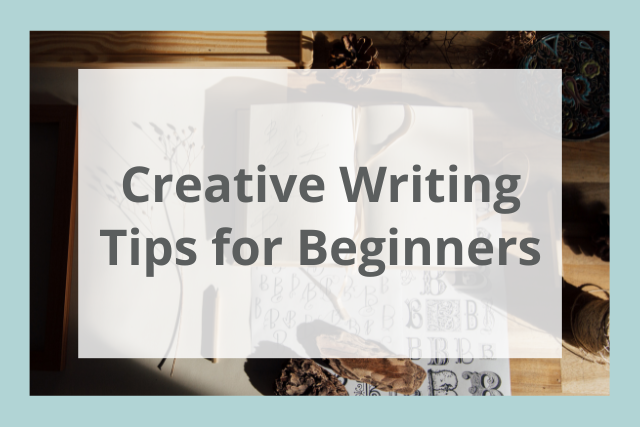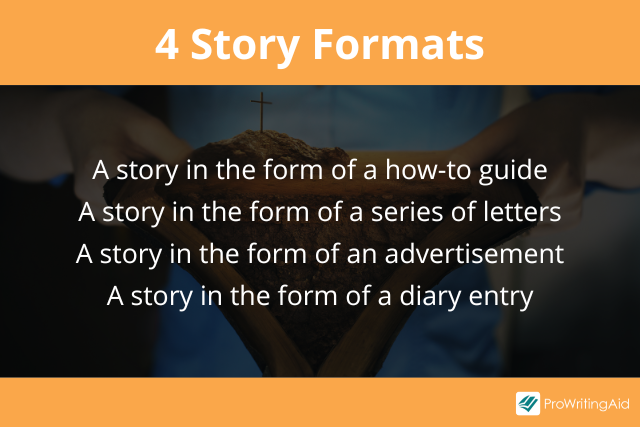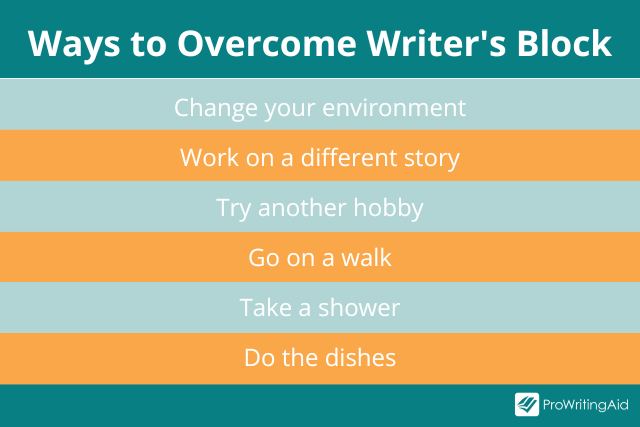
Creative writing can be a very fulfilling hobby.
Writing can help you explore deep questions, use your imagination, and express your thoughts and feelings in a healthy way.
If you want to learn creative writing, you’ve come to the right place. Read on to learn our top ten creative writing tips to help you get started.
How to Write Creatively
Anyone can learn creative writing—all you need is a pen and paper, or your writing software of choice.
Once you’ve got your tools ready, it’s time to think of a story idea. You can draw inspiration from your own life, newspaper headlines, songs you like, or anything else around you.
If you don’t have any story ideas in mind, you can also try starting with a prompt. Here are a few creative writing prompts you can choose from:
- Write about someone with a dangerous secret
- Write a scene set at your favorite restaurant
- Write a story about someone who wakes up with no memories, except for a single name
- Write a story from the perspective of someone who isn’t human
- Complete the sentence: “It was a completely normal Saturday except for…”
Pick up your pen, choose your favorite prompt, and start writing!
10 Creative Writing Tips for Beginners
If you’re new to creative writing, here are ten fiction writing tips that you can try.
Tip 1: Read Widely
It’s hard to become a great musician without having heard a lot of great music.
The same is true for writing. Reading a lot of books is a great way to get inspired and to learn more about the anatomy of a story.
It’s important to read in whatever genre you want so you can understand the conventions of that genre. If you’re writing a fantasy story, for example, you should familiarize yourself with popular fantasy novels and short stories so you know what readers expect.
On the other hand, it’s just as important to read a diverse variety of books. Exposing yourself to lots of genres and authors can help you learn about different writing styles and techniques.
Tip 2: Experiment With Different Formats and Points of View
Creative writing can involve countless different formats. You can write a story that looks like a diary entry, a song, or a Charles Dickens novel.
Maybe you want to write a story in the form of a series of instructions to the reader, like a cooking recipe or a how-to manual.
Or maybe you want to write a story in the form of a confession from one character to another, in a mix of first-person and second-person POV.

Try out different styles, even ones that don’t feel like your usual writing style. Doing this experimentation early on in your creative writing journey can help you find your own voice and figure out what works best for you.
Tip 3: Take Inspiration From Many Sources
No story is written in a vacuum. Every artist takes inspiration from other works of art, and you shouldn’t feel bad about writing a story that’s inspired by your favorite book or movie.
At the same time, though, it’s important not to write a story that actually plagiarizes an existing one. Directly copying the work of other creative writers is both unethical and illegal. Plus, it’s much less fun than writing your own stories.
A good rule of thumb if you’re looking for ideas is to take inspiration from many sources rather than a single one.
For example, maybe you like the sarcastic humor of one book, the sweet romance arc of another book, and the Gothic setting of your favorite TV show. When you merge those three things together, you’ll most likely create a story that feels unique and original, even though you took inspiration from existing stories.
Tip 4: Show, Don’t Tell
The phrase “Show, don’t tell” is a popular piece of writing advice that almost every writer has heard before.
Essentially, “show, don’t tell” means that you should immerse the reader in your story through sensory details and descriptive language instead of simply summarizing the story to them.

For example, you could tell someone, “My sister’s room is messy.” That sentence conveys the facts, but the person you’re talking to probably wouldn’t be able to picture your sister’s room in their head.
On the other hand, you could say, “My sister basically uses the floor of her room as a giant laundry hamper—it’s covered with so many sweaters and scarves that I don’t even remember what color her carpet is.” This sentence gives your listener a much more specific idea of what your sister’s room looks like.
Tip 5: Write With Intention
Many newer writers put down words on the page based on what comes to mind first.
For example, let’s say you’re trying to describe a character. A new writer might note down whatever details they visualize right away, like the color of the character’s hair or the type of clothes they’re wearing.
This is a great way to write when you’re just starting out, but if you want to improve your skills, it’s important to learn how to write with intention.
Try to get in the habit of asking yourself: What details does the reader need to know and why? For example, what aspects of this character’s hair color and outfit could tell the reader something deeper about the character’s personality and motivations?
It’s also important to figure out what you want to convey emotionally. What do you want your reader to feel? Excited? Creeped out? Hopeful?
For example, you might describe a sunset as “blood-red” if you want the reader to feel creeped out, or as “glowing and bright” if you want the reader to feel hopeful.
Tip 6: Learn How to Edit
No first draft is perfect, even if you’re a seasoned writer.
Learning how to edit your work is just as important as learning how to write on a blank page. That’s how you can create a creative work you feel proud of.
One helpful tip is to try reading your work out loud. That can often help you spot places where your prose doesn’t flow.
AI-powered grammar checkers like ProWritingAid can also help you identify weaknesses in your prose and learn how to strengthen them. You can catch your grammatical mistakes, avoid unnecessary repetition, choose more evocative words, and more with our powerful tool.
Tip 7: Practice Overcoming Writer’s Block
At some point in their writing journey, every writer has reached a point where writing doesn’t feel fun anymore.
There are lots of different causes for writer’s block. You might be unsure what to write, afraid of failing, or simply burned out from writing too much.
It’s important to find ways to overcome creative blocks, so you don’t end up putting down your pen for good.

One useful technique is to change your environment. If you normally write at home, try writing in a coffee shop or in your local library.
Another technique is to try a different activity for a while. Go for a walk, take a shower, do your dishes, or try another hobby. Before long, you’ll find yourself wanting to write again.
Perhaps the most underrated method is to simply take a break from writing. Give yourself permission to stop for a while—it’s always okay to take a step back.
Tip 8: Study Writing Craft
Many new writers falsely believe that writing can’t be taught; you’re either good at it or you’re not.
But the truth is that creative writing is a craft, just like woodworking, oil painting, or ballet. You wouldn’t expect anyone to be naturally good at ballet without years of training, so why is writing any different?
One way to learn new creative writing techniques is by reading craft books. Some great books to start with include On Writing by Stephen King, Story Genius by Lisa Cron, and The Creative Writer’s Handbook by Philip K. Jason.
These books can help you learn the basics of how to write well. For example, you can learn how to construct high-quality sentences, how to avoid passive voice, and how to use poetic devices.
The more you learn, the more powerful your writing will become.
Tip 9: Invent Your Own Process
When you’re just starting out as a writer, it can be tempting to copy someone else’s writing process.
Maybe you heard an interview with a bestselling author who said you have to outline a story before you draft it. Or maybe you found out your favorite author writes 1,000 words every day, and now you think you have to write 1,000 words every day too.
But it’s important to remember that no two writers have the exact same writing process. What works best for someone else might not work for you.
There’s no right or wrong way to be a creative writer. Your job is to find a writing process that makes you feel fulfilled, productive, and inspired—and if your favorite writers don’t write the same way, that’s perfectly okay.
Tip 10: Don’t Aim for Perfection
There’s a good chance your writing is never going to be perfect. Mine definitely isn’t!
Remember that writing is about the process, not the product. Even if the final product is never perfect, the process has helped you grow as a writer—and hopefully, it’s also been a lot of fun.
You should decide what your main goal for writing is. Maybe it’s writing stories you might be able to publish someday. Maybe it’s telling stories about characters you rarely see in existing stories. Maybe it’s simply a fun new hobby.
Whatever your goal is, remember that you’re already on your way to achieving it. You don’t need to aim for perfection in order to succeed.
How to Get Better at Creative Writing
There’s no secret to getting better at creative writing. The process is very simple—it just takes a lot of hard work.
All you have to do is follow this two-step process:
- Step 1: Write consistently
- Step 2: Ask for feedback on your writing
The first step is fairly self-explanatory. Whenever you’re learning a new skill, it’s important to practice it. The more you write, the more you’ll learn about how to be a successful creative writer.
The second step is the one that receives more pushback from writers because it requires a lot of courage and vulnerability, but it’s just as important as the first step.
If you don’t get feedback, you could write every day and still never improve. That’s because most people can’t spot the weaknesses in their own stories.
You can ask for feedback from your friends, family, or writing groups. They can help you see your work from a different perspective and identify areas for improvement.
As long as you write consistently and listen to the feedback on the work you’re producing, you’ll be able to create a positive cycle where you create better and better stories over time.
Where to Find Creative Writing Help
If you want to improve your creative writing skills, there are numerous resources you can use to find help.
One great method is to join a writing community where you can share your work and get feedback from other writers.
You can look for free critique groups online, on websites such as Scribophile and Critique Circle. Or you can start your own group with your friends.
You can also consider joining a local writing class or retreat. Many schools and community centers offer classes and workshops you can join.
Another option is to use creative writing tools. ProWritingAid can give you AI-powered suggestions about how to improve your prose and make your writing shine.
Good luck, and happy writing!

